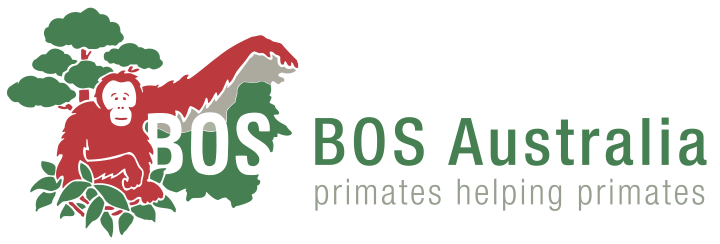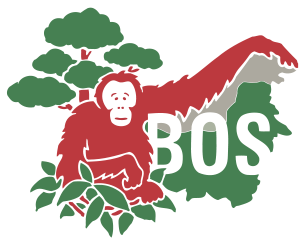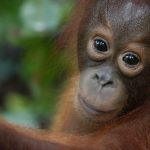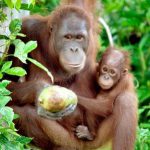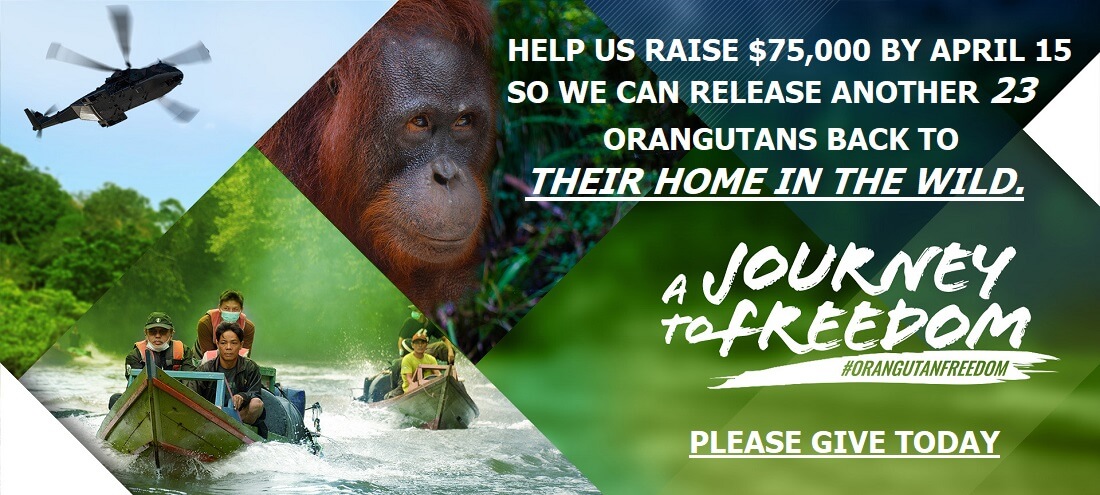Our destructive ways
Our destructive ways
Sunday Star Times: Kim Knight:23 August 2009
OUR truck bumps and grinds over the bones of Sumatra.
Felled trees, burnt stumps. Once tropical rainforest, now palm plantations spread across this Indonesian island like a plague.
We drive and drive and drive. Past broken-down machinery. Past empty fertiliser sacks, rigged for shade outside workers’ huts. The heat is intense, but you can’t see the sun because here in Riau province 2400 fires are burning out of control. The smoke is so thick the local airport has closed and 31,000 school children have been sent home.
It looks like Armageddon. It’s just a palm plantation.
Palm oil is a controversial component of everything from cosmetics to confectionery. Its use has been blamed on the destruction of tropical rainforest and habitat for the Sumatran tiger and orang-utan. Public discontent is growing. Just last week, Cadbury New Zealand announced it had shelved plans to use palm oil in its Dairy Milk chocolate.
But oil is not the only product that comes from palm.
Palm kernel expeller or PKE is a product made from its crushed and processed fruit. Unlike palm oil, its use has received minimal press. Two weeks ago, the Sunday Star-Times travelled to Indonesia, with an unofficial environmental and rural sector delegation, to investigate this trade first-hand.
Why? Because last year, almost one-quarter of the world’s entire palm kernel expeller was sold to New Zealand. Statistics NZ data shows it came, in almost equal measures, from Indonesia and Malaysia. And, according to the secretary-general of the Roundtable on Sustainable Palm Oil, the international body set up to promote the growth and use of sustainable palm oil, “very little… would have been certified at all”.
In fact, the Sunday Star-Times determined that even under the absolute best-case scenario, nearly 800,000 tonnes of potentially environmentally and socially unsustainable palm kernel entered New Zealand last year.
Figures from the United States Department of Agriculture put this country’s demand for PKE second only to the combined 27 countries that make up the European Union (where it is also used as a fuel).
“The EU remains the primary destination,” says Wiliam George, USDA senior agriculture economist. “But New Zealand is the major growth market.”
The 1,104,187 tonnes of PKE that entered our ports in 2008 represented more than a thousand-fold increase since 2000 and was twice that of 2007 imports.
The key drivers: drought and the subsequent shortage and high price of locally grown supplementary feed, and the intensification of our dairy farms.
“The use of bought-in feed on dairy farms has increased substantially … particularly fuelled by demand as a result of drought,” says the Ministry of Agriculture and Forestry’s 2008 pastoral monitoring report. During the drought: “Many farmers lifted the PKE content to around 50% of the 12 to 14 kilograms of dry matter required for a milking cow at this time of year.”
But Greenpeace NZ says the use of PKE calls into question the “clean green” claims of New Zealand farmers, and dairy giant Fonterra, which collects 90% of the country’s milk production. (Check out this video clip of Greenpeace’s findings)
“The intensification of our dairy sector has led to a cycle that requires more and more inputs needed to boost production,” says Suzette Jackson, Greenpeace communications manager.
“New Zealanders should be shocked that Fonterra and our nation’s dairy herd are contributing to the destruction of Indonesian and Malaysian rainforests.”
FONTERRA DECLINED official comment on this story. Lachlan McKenzie, Federated Farmers dairy chairman, said: “Don’t blame the customer.”
McKenzie argues PKE is simply a by-product of the palm oil industry.
“This is the husk that is left after the oil is taken out … let’s assume we ban import of palm kernel, stop buying it full-stop, phase it out over two years or something. You think that’s going to have any dent on the growing of palm oil? Not a thing. Not a dicky-die-doh.”
McKenzie said that although farmers could ask questions, ultimately, it was up to importers to ensure ethical and sustainable sources.
“I can’t go over, as a farmer, and certify anything.”
Last week, Agriculture Minister David Carter announced that the nationwide drought between spring 2007 and autumn 2008 cost the country’s economy $2.8 billion. Federated Farmers grain and seed section says locally grown supplementary feeds were available during that period but agreed supply was tight, and prices high. PKE was a cheap alternative, a medium protein feed, with low starch and sugar levels and highly digestible fibre.
“It’s economics,” says McKenzie. “In drought you couldn’t have fed grain to those cows, you would have killed them, because you’ve got to have carbohydrates and other fibre to balance the grain. PKE … it kept them alive and they didn’t get any metabolic problems.”
Is McKenzie concerned about damage to New Zealand’s international reputation and milk exports as a result of its high use of PKE?
“It’s no different to someone buying in components to put into an electronic device and then exporting the electronic device.”
Grass, says McKenzie, still makes up more than 95% of a dairy cow’s diet.
THE ROUNDTABLE on Sustainable Palm Oil (RSPO) was formed in 2004 in response to serious concern about palm plantation practices there were instances, says the organisation, where the development of plantations had led to the conversion of high conservation value forests, forest fires and social conflict between local communities and plantation owners.
It was necessary “to develop a globally acceptable definition of sustainable palm oil production and use, as well as implement better management practices that comply with this definition”.
Today, members include banks, food retailers, environmental groups and those directly involved in the growing, processing and trade of palm trees.
Speaking from Kuala Lumpur, secretary-general Dr Vengata Rao told the Sunday Star-Times that since late August last year, only 330,000 tonnes of palm kernel used in both the production of palm kernel oil and palm kernel expeller had been certified by the body. As of last week, only about half that volume (an estimated 165,000 tonnes) had actually left mills in Indonesia, Malaysia and Papua New Guinea.
“Certainly very little expeller cake coming into New Zealand last year would have been RSPO certified at all,” Rao said.
As a rough rule of thumb, said Rao, the production ratio between palm kernel oil and expeller was about 50:50 in other words, only about 80,000 tonnes of certified PKE has been on the global market between August last year and today.
In Indonesia, companies involved in palm oil and kernel production have been accused of illegal logging, burning and occupation of community land, as they prepare the land for planting. Village leaders told the Sunday Star-Times their fisheries were polluted and the smoke-choked air from plantation burn-offs was dangerous to breathe. Conservationists feared for the future of animals like the Sumatran orang-utan and tiger.
What’s this got to do with New Zealand? Even if we bought every scrap of certified palm kernel expeller available last year, we are still open to criticism around the worst aspects of this trade, because we imported more than three times the world’s total available certified product.
WHO IN New Zealand imports palm kernel expeller and where do they get it from? Every company contacted by the Sunday Star-Times cited commercial sensitivity and told us to talk to someone else. We know there are at least six New Zealand importers of PKE. They include RD1 (owned by Fonterra and Australia’s Landmark Holdings), ABB Grain NZ, and Swap Stockfoods. Stephen Swap, director of the latter, identified those three companies as major players. Others with PKE interests included farmer fertiliser co-operative Ravensdown, Winton Stock Feed and Source NZ.
Swap says dairy farmers are his main client. He’s anticipating a major drop-off in demand this year. “Last year? Half of that was driven by drought.”
When we asked Swap about certification of the product he sells, he said it came from Malaysia, where, “they’re not just bulldozing rainforests”.
ABB Grain referred us to its Adelaide office, which promised a written answer, but then declined to comment. Earlier, a staff member had said some of its suppliers were RSPO members. When reminded membership did not equate to certification, he said: “At the end of the day that has to be initiated from their end … we can’t be there policing that.”
RD1’s chief executive, John Lea, initially told us “almost all RD1’s PKE is sourced from Malaysia. These operations have RSPO certification”.
Last year, RD1 entered into a joint venture with a company called Wilmar. In a press release at the time, Lea said the venture was “partly driven by more intensive farming systems using nutritional supplements to complement pasture-based feed”.
But Greenpeace says that if RD1 or Fonterra had done their homework, that deal would never have been signed, because Wilmar (which was contacted for this story but did not respond) has a less than ideal ecological reputation.
Wilmar International claims to be Asia’s leading agribusiness group. Its headquarters are in Singapore, and its operations spread across more than 20 countries, with a workforce of 70,000-plus.
Figures from its recent annual report show 223,258ha of palm plantations. Almost three-quarters of those are in Indonesia. The chain of supply back to New Zealand goes like this: Dairy farmers own Fonterra, which part-owns RD1, which part-owns International Nutritionals (INL) which imports exclusively from Wilmar.
Lea says RD1’s shipments via INL have been happening only since September. But Wilmar has been a player in the New Zealand market for far longer. This, from an RD1 employee quoted in the Taranaki Daily News in January: “Wilmar supplied 85% of all palm kernel imported into New Zealand in 2007.”
John Lea said RD1’s total PKE imports were “commercially sensitive” but the Sunday Star-Times was told by WWF Malaysia that only 27,400 tonnes of Wilmar palm kernel product could be considered RSPO-certified.
Greenpeace breaks that figure down further: “Roughly half of this amount would go to palm kernel oil, and the other half to PKE,” says Jackson. “So that means only 13,700 tonnes of Wilmar’s certified palm kernel is going to animal feed.”
Hours before deadline, Lea slightly revised his position. “We can’t guarantee every tonne sourced from RSPO sources but we have tried very hard to make sure we are sourcing from a very reputable company that was a founding member of RSPO and is actively getting its mills and plantations certified.”
THE SUNDAY Star-Times spent a week in Indonesia. And another week on the phone to experts, pressure groups and industry representatives in the Netherlands, Malaysia, Singapore, Australia and the United States.
Of the New Zealand PKE importers contacted, only RD1 commented in any detail. Lea noted Wilmar had achieved RSPO certification for three mills and four plantations in East Malaysia in December. He said Wilmar operated only on lands designated and licensed for agriculture development degraded and already logged forests that had lost economic and environmental values.
Indeed, Wilmar’s website cites economic, social and environmental sustainability as key business drivers. It says it will not develop high conservation value forests, that it will only work degraded forest areas following environmental impact assessments, that it maintains a “zero burn” policy, and that it does not establish plantations on deep peat lands.
It says while land tenure rights remain ambiguous, “we will work to ensure all mutual agreements with communities and individuals in Indonesia are clearly defined, documented and legally established”.
But reports from international environmental groups have disputed that. One, released in July 2007 by three groups including Friends of the Earth Netherlands, alleged that three Wilmar-related companies showed “evidence of illegal burning with the intention to clear land, illegal plantation development without approved Environmental Impact Assessments, land rights conflicts …”
Wilmar countered aspects of the report. But just last week, in response to complaints from the report’s authors, an audit by the International Finance Corporation’s own compliance arm was released. It found it had failed to apply its own environmental and social standards in a series of investments and loans to Wilmar. It criticised the exclusion of supply chain assessments and said that was “counter-productive to IFC’s mission of reducing poverty and improving lives”.
From Amsterdam, Environment Milieudefensie campaigner Claudia Theile told the Sunday Star-Times: “After two years of hard negotiations, two of the communities from the report got some of their land back, compensation for lost harvest and Wilmar is paying more attention to corporate social responsibility.”
She said that although her organisation could see steps in the right direction: “This does not solve the urgent issues connected with palm oil expansion.
“Using large amounts of palm kernel meal to feed cows is definitely not green. The palm oil industry is rapidly expanding and destroys rainforests and indigenous people’s land in places like Borneo, Papua and Sumatra. The case of Wilmar illustrates what goes wrong. New Zealand should be very careful not to feed its cows by eating into the last remains of biodiversity rich forests and by milking away local people’s access to land.”
Additionally, she said, Wilmar buys from companies like Duta Palma another she has concerns about.
THE PHOTOGRAPH on our cover is of a plantation which locals told the Sunday Star-Times is owned by Duta Palma company. The community leaders who provided access said they wanted New Zealanders to reconsider their use of palm products.
In a sparsely furnished room with slat windows and a coconut timber roof, village leaders put aside the sweet tea and startlingly lime green cake they have laid on for visitors.
Raja Anis, 57, is chairman of the Kulia Mulia Village Traditional Practices Association. He claims 1200ha of community land has been signed over to Duta Palma by the Indonesian government.
“Not only have they opened up palm oil plantations but they have also seized the people’s fields … 90% of the people are now disappointed that the company is here. In the Kuala Mulia Village, there are roughly 75% fishermen and farmers. Now there’s nothing of value any more.”
He says he has complained at the highest level, but letters sent to the Indonesian president received no response.
“We consider that we have been colonised by our own people … it looks like the future for all of us here is bleak.”
At least three people have been jailed in this particular fight for land ownership. Through a translator, we learn a village head spent 11 days in prison, after he was accused of damaging a bridge.
“They protested, and the company reported to police.”
The Company. There are many operating in Indonesia, but locally, they are lumped into one. At a lunch stop, we discuss the day’s activities, and are quietened by our local guide: “Many company people in this town.”
In a country where, a fortnight before our visit, two hotels were bombed by terrorists, where journalists visiting on media visas are required to provide their copy to government officials, there were moments when it seemed safer to just sit in uneasy silence.
As we crossed security checks and road blocks, our cover was, variously, that of forest fire monitors, academics, and land buyers. Once, inexplicably, we become artists.
Plans to film plantations from the air were quashed. Possibly because helicopters were required for fire-fighting, but also, we were told, because police determined it was Greenpeace who wanted to hire a chopper.
Back at Anis’s house, through a cloud of clove cigarette smoke, there is more talk of protest. “They are tired with negotiation,” says the translator. “They are ready to face the police.”
Across the room, a New Zealand farmer listens with a strained face. “Kia kaha,” says Max Purnell. “Be strong.”
The 59-year-old with a 40-year farming career (including five years in the dairy industry) lives in Waitakaruru, where he farms mixed dry stock. He’s on the Agriculture Marketing Research and Development trust and the Waikato Community Trust.
Greenpeace have invited Purnell, as an independent observer, to take his experiences back to rural New Zealand.
“I would like the people in our communities to think about what it would be like to have their cash flow ripped from them and reduced to a subsistence existence in the back of their garden, with their rivers filled with pesticides. I’d say stop … there’s some simple principles about responsible investment and this is clearly not.”
It’s day five of this road trip when Purnell offers his thoughts over strong coffee and the ubiquitous Indonesian breakfast of nasi goreng.
“What we have witnessed is a systematic, deliberate studied rape and desecration of land and the local people’s ability to have a future with it,” he says.
“A change of practice that completely destroyed the locals’ ability to use their additional lands to grow and harvest food sustainably. A change to a land use that is unsustainable, for the short-term profits for others in another country, as well as adding considerably to the international problem of climate change.”
Plantation ownership is as murky as some of the canals that criss-cross this converted landscape. Sumatra is home to the oldest and largest palm crops. Our group has entered two plantations on this study trip one was previously owned by the Wilmar group and was criticised in the Dutch report. In response, the company said it had sold the land further digging by NGOs alleged the purchaser was linked to Wilmar, and that the original company was still sourcing product from that plantation.
But you don’t have to leave the main road to see the impact of this trade. Because, for hours and hours, and miles and miles, palm trees dominate the landscape. We travel behind dozens of trucks laden with the pineapple-looking fruit that will become stock food and oil. Once, as dusk falls, our driver looks out the window and comments with zero emotion in his voice “you used to see elephants here”.
“It has hurt coming to grips with the enormity of the devastation that my country has been part of wreaking on this gently spoken, hard-working people,” says Purnell.
He says Indonesia is still grappling with its independence. “A mere 60 years after 350 years of colonial rule by the Dutch. This nation needs help and co-operation, not predators.”
Good farmers, says Purnell, are nurturers.
“The need to keep life around you in good order transcends everything. When your cows are hungry, you feed them. When that drought was on last year, there appeared to be little alternative for many people but to use palm kernel. I, for one, did not know the consequences … the impact on the food supply, the fishing … I am confident that many of my fellow farmers will look for alternatives.”
The dairy industry, he says, survived for more than 100 years without palm kernel. “It may well decide to do so again … This is behaviour we can’t afford.”
There is an alternative: locally grown maize. “There was a surplus of maize silage this season,” said Hew Dalrymple, Federated Farmers New Zealand grain and seed section vice-chairman. And while acknowledging it was tough during last year’s drought, he says there was feed available at a price.
His organisation is deeply concerned about biosecurity risks associated with the importation of PKE. Last year, it called for a ban on imports.
“There are threats from imported insects, risks from soil contamination and foot and mouth and food safety issues. And of course, there are environmental issues. It is important that we remain environmentally sustainable,” Dalrymple said last week.
Green Party co-leader Russel Norman expressed concern in April: “Increases in consumption of palm kernel mixtures or `cakes’ by New Zealand agriculture over the last seven years, excluding this year, would need up to 900,000 hectares of rainforest to be cleared for palm oil to meet the increased demand if new plantations were required … equivalent to clear-felling rainforest four times the size of Te Urewera National Park.”
More than 240 million people live in Indonesia, a collection of 17,508 islands, rich in biodiversity. It supports the world’s second-highest number of species. It is also, say scientists, the world’s third biggest emitter of greenhouse gases. Globally, about 20% of greenhouse emissions are caused by deforestation, because forests and their soils are huge carbon stores.
Across South-East Asia, an estimated two billion tonnes of carbon dioxide are released each year from the drainage and burning of peatland forests 90% of those, says Greenpeace, come from Indonesia.
Suzette Jackson says: “Agriculture makes up 50% of New Zealand’s greenhouse gas emissions. This figure would skyrocket if you included the emissions from the destruction of rainforests in Indonesia and Malaysia that we are part of.”
IT TAKES two hours to drive the 12km dirt track to the Frankfurt Zoological Society camp at Bukit Tigapuluh National Park. That’s the way they like it it keeps the logging trucks out.
The Sumatra Orang-utan conservation project has re-released 108 orphaned animals into the wild since 2002. Funding sources include Auckland Zoo, which contributes $60,000 annually. The main threat to this “life boat” project is the pulp and paper industry, but, says director Peter Pratje, “on an island scale, palm oil is the big threat. The whole landscape here in Sumatra, it’s going more and more like Malaysia, you hardly find natural trees anymore, there is huge palm oil production”.
He says orang-utan, tiger and elephants need lowland forest, “and that’s often the area the timber industry and plantations demand”.
Night falls dark and swift in this equator-straddling archipelago. The jungle burps and farts strange noises: frogs, crickets, birds and monkeys carousing until morning.
5.30am on a New Zealand dairy farm: workers rise, boil the kettle and get ready to milk.
5.30am at an orang-utan refuge: workers rise, boil the kettle and get ready to feed their charges.
Rescued from illegal capture and trade, these orang-utans are being trained to live back in the wild. They need to know how to eat durian, jack fruit, pineapple and rambutan; that they must stay in the trees, not on the ground, to avoid parasites and predators. Conservation staff can spend up to five months tracking these animals, driving them back up trees, ensuring their safety.
“If they learn good, you can go away,” says Julius Siregar, the 27-year-old camp manager.
When we visit, the camp has 20 monkeys in captivity, awaiting fruit season and their release to the wild.
They stare at the human visitors, their hands reaching through the bars sometimes grabbing, and sometimes just grazing fingertips. Later, we walk through the forest, avoiding spiky rattan and trying not to think about ticks and snakes. Suddenly, in the trees, an orang-utan. And then another. A couple, says Siregar, who found each other in this refuge. This island of trees, surrounded by palms.
Kim Knight’s trip to Indonesia was funded by the Sunday Star-Times.
